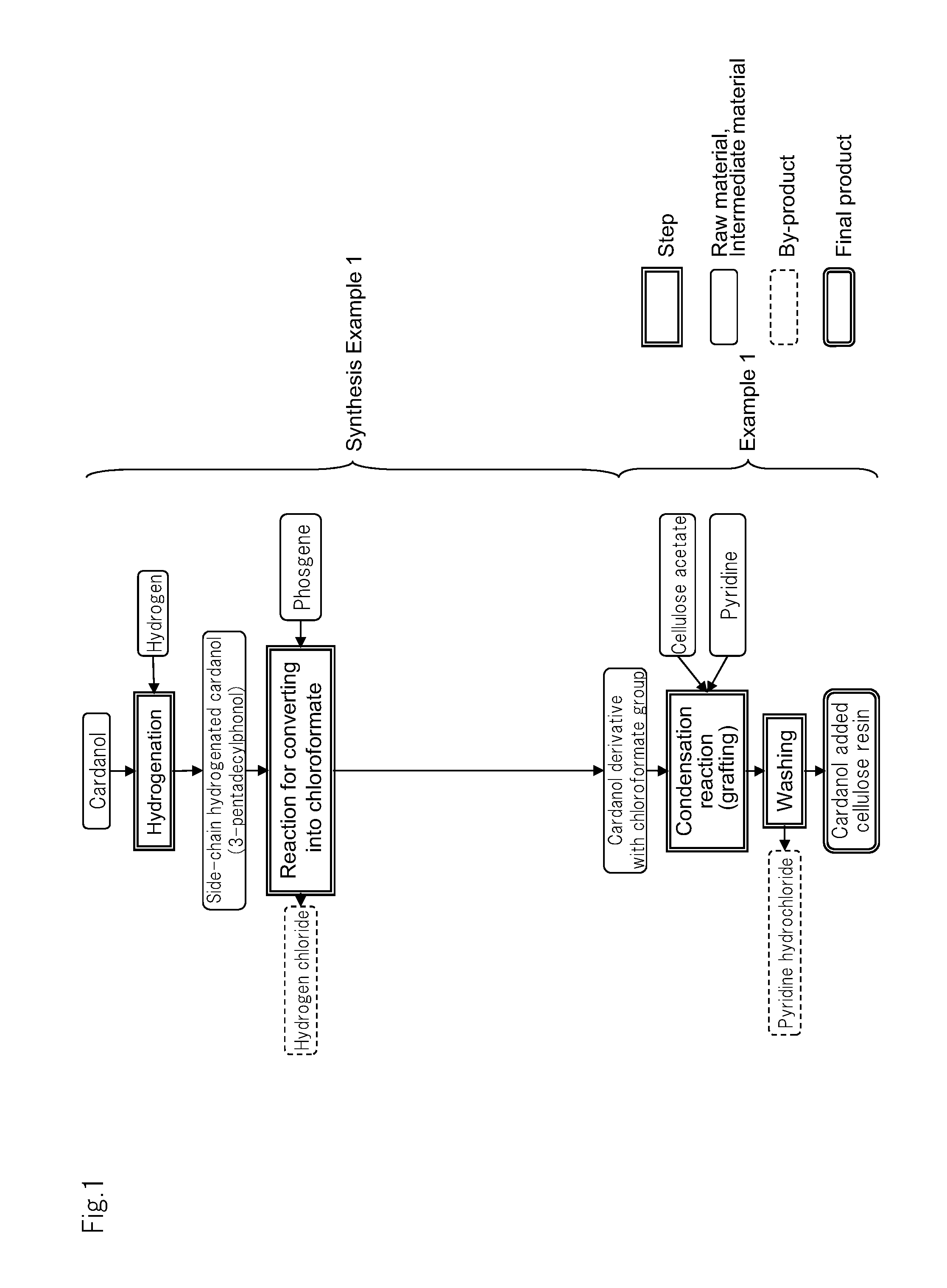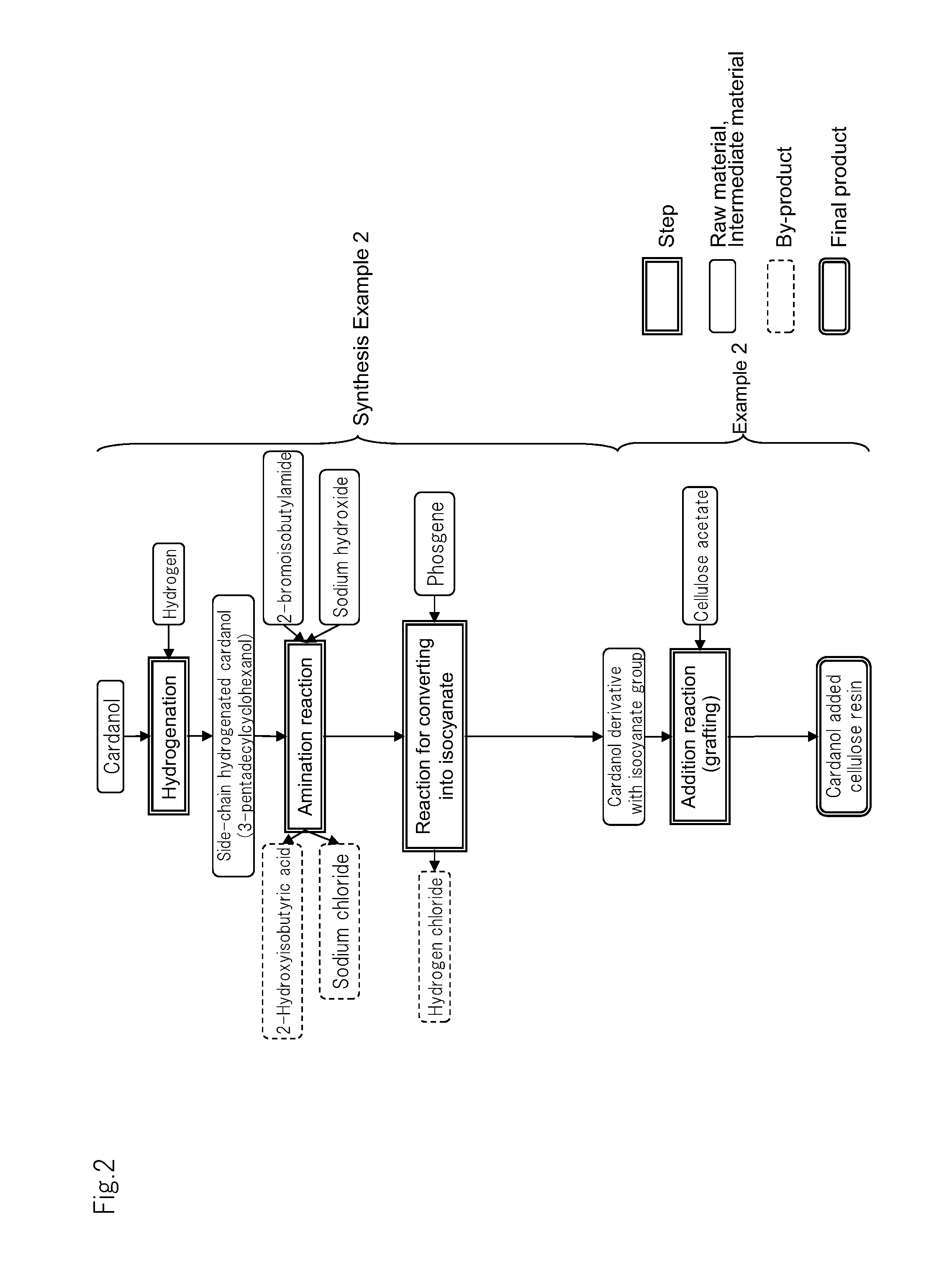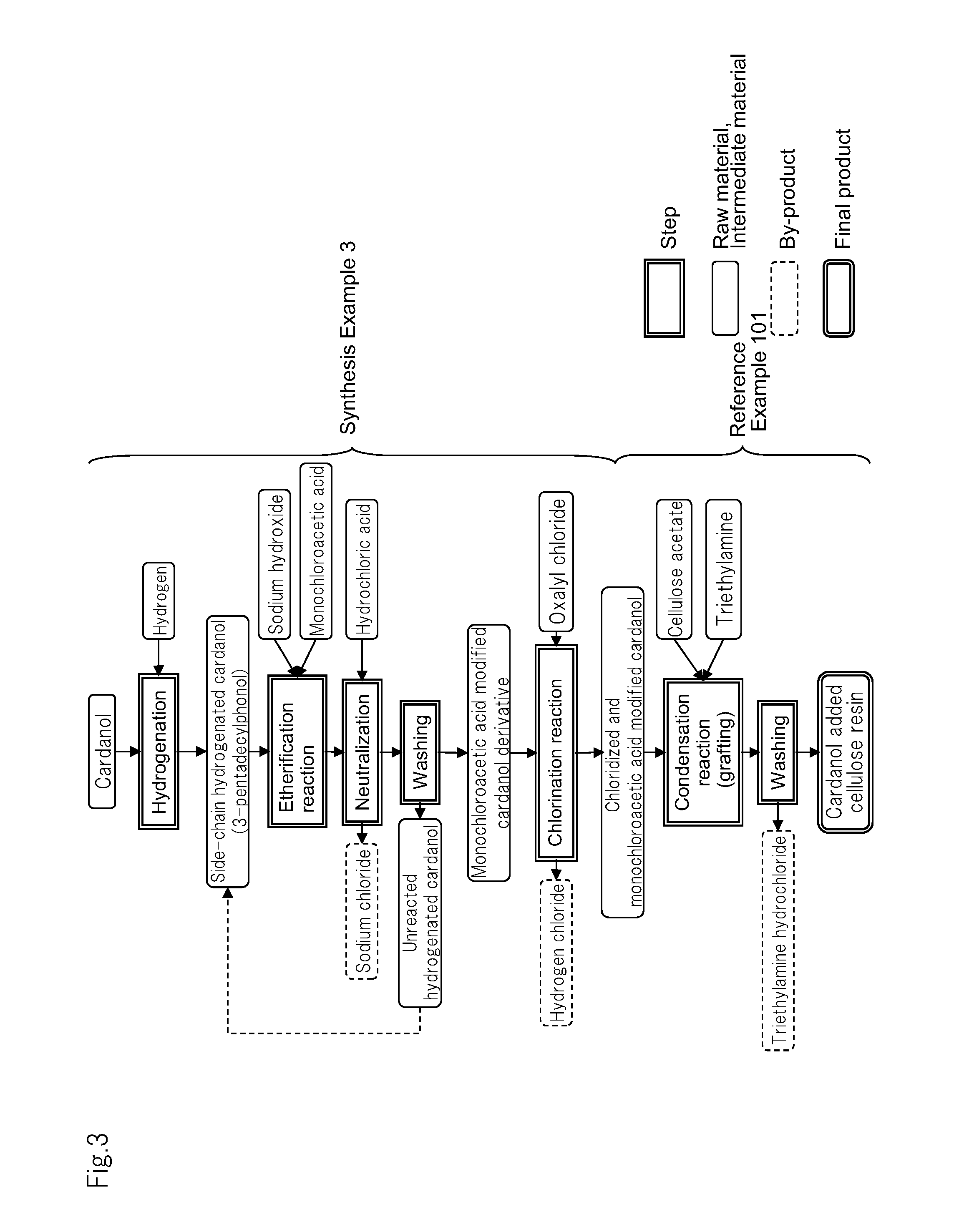Cellulose resin and process for producing the same
a technology of cellulose resin and cellulose resin, which is applied in the field of cellulose resin and a process for producing the same, can solve the problems of insufficient strength, heat resistance, water resistance and thermoplasticity of cellulose bioplastic, and the ratio of plant utilization (vegetism) decreases, so as to improve the utilization ratio of non-edible parts, heat resistance, strength and water resistance, and improve the thermoplasticity. , the effect of improving the utilization ratio
- Summary
- Abstract
- Description
- Claims
- Application Information
AI Technical Summary
Benefits of technology
Problems solved by technology
Method used
Image
Examples
synthesis example 1
Synthesis of Modified Cardanol 1 (Cardanol with a Chloroformate Group)
[0140]Hydrogenated cardanol (m-n-pentadecylphenol manufactured by ACROS Organics) prepared by hydrogenating an unsaturated bond of the straight-chain hydrocarbon moiety of the cardanol was used as a raw material. The phenolic hydroxy group of the hydrogenated cardanol was reacted with phosgen to obtain cardanol with a chloroformate group. More specifically, cardanol with a chloroformate group was prepared in accordance with the following procedure.
[0141]After hydrogenated cardanol (80 g (0.26 mol)) was dissolved in chlorobenzene (120 mL), phosgen was supplied for 5 hours at 100° C. while stirring the mixture. Thereafter, the solvent was distillated away under reduced pressure to obtain cardanol with a chloroformate group (96 g (0.26 mol)).
synthesis example 2
Synthesis of Modified Cardanol 2 (Cardanol with an Isocyanate Group)
[0142]Hydrogenated cardanol (m-n-pentadecylphenol manufactured by ACROS Organics) prepared by hydrogenating an unsaturated bond of the straight-chain hydrocarbon moiety of the cardanol was used as a raw material. The phenolic hydroxy group of the hydrogenated cardanol was reacted with sodium hydroxide and 2-bromoisobutylamide to add an amino group. In this manner, aminated and hydrogenated cardanol was obtained. Subsequently, the amino group was reacted with phosgen to convert the amino group to an isocyanate group. In this manner, cardanol with an isocyanate group was obtained. More specifically, cardanol with an isocyanate group was prepared in accordance with the following procedure.
[0143]Hydrogenated cardanol (91 g (0.30 mol)) was dissolved in dimethylformamide (450 mL), and sodium hydroxide (36 g (0.90 mol)) was added. After the solution was stirred at room temperature for one hour, 2-bromoisobutylamide (150 g ...
synthesis example 3
Synthesis of Chloridized and Monochloro Acetic Acid Modified Cardanol (Chloridized and Hydrogenated Cardanol) (Corresponding to Reference Synthesis Example 2 (Described Later))
[0145]Hydrogenated cardanol (m-n-pentadecylphenol manufactured by ACROS Organics), in which an unsaturated bond of the straight-chain hydrocarbon moiety of cardanol is hydrogenated, was used as a raw material. The phenolic hydroxy group of the hydrogenated cardanol was reacted with monochloro acetic acid to add a carboxyl group to obtain carboxylated and hydrogenated cardanol. Subsequently, the carboxyl group was converted into an acid chloride group by chloridizing with oxalyl chloride to obtain chloridized and hydrogenated cardanol. More specifically, the chloridized and hydrogenated cardanol was prepared in accordance with the following procedure.
[0146]First, hydrogenated cardanol (80 g (0.26 mol)) was dissolved in methanol (120 mL). To this, an aqueous solution of sodium hydroxide (64 g (1.6 mol)) dissolve...
PUM
| Property | Measurement | Unit |
|---|---|---|
| pressure | aaaaa | aaaaa |
| pressure | aaaaa | aaaaa |
| pressure | aaaaa | aaaaa |
Abstract
Description
Claims
Application Information
 Login to View More
Login to View More - R&D
- Intellectual Property
- Life Sciences
- Materials
- Tech Scout
- Unparalleled Data Quality
- Higher Quality Content
- 60% Fewer Hallucinations
Browse by: Latest US Patents, China's latest patents, Technical Efficacy Thesaurus, Application Domain, Technology Topic, Popular Technical Reports.
© 2025 PatSnap. All rights reserved.Legal|Privacy policy|Modern Slavery Act Transparency Statement|Sitemap|About US| Contact US: help@patsnap.com



